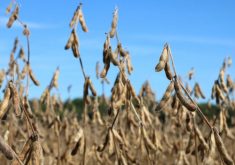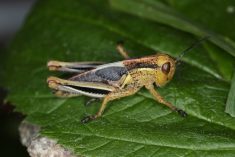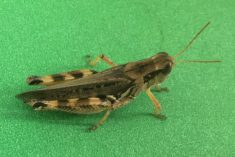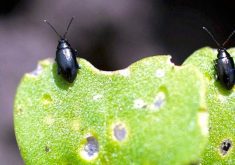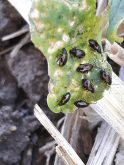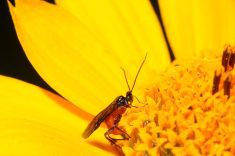This year’s grasshopper threat remains light to very light across Manitoba, according to survey data released by the Prairie Pest Monitoring Network on April 27.
The data is based on surveys done in 2019. These included nearly 3,200 grasshopper counts across the Prairie provinces between May 1 and August 31.
Maps in the report show the risk of grasshoppers in Manitoba to be split between very light and light, with a pocket of moderate risk in the Interlake. The report shows an increase in grasshopper risk from 2019, when risk was considered none to very light in most of the province with pockets of slightly higher risk.
Read Also
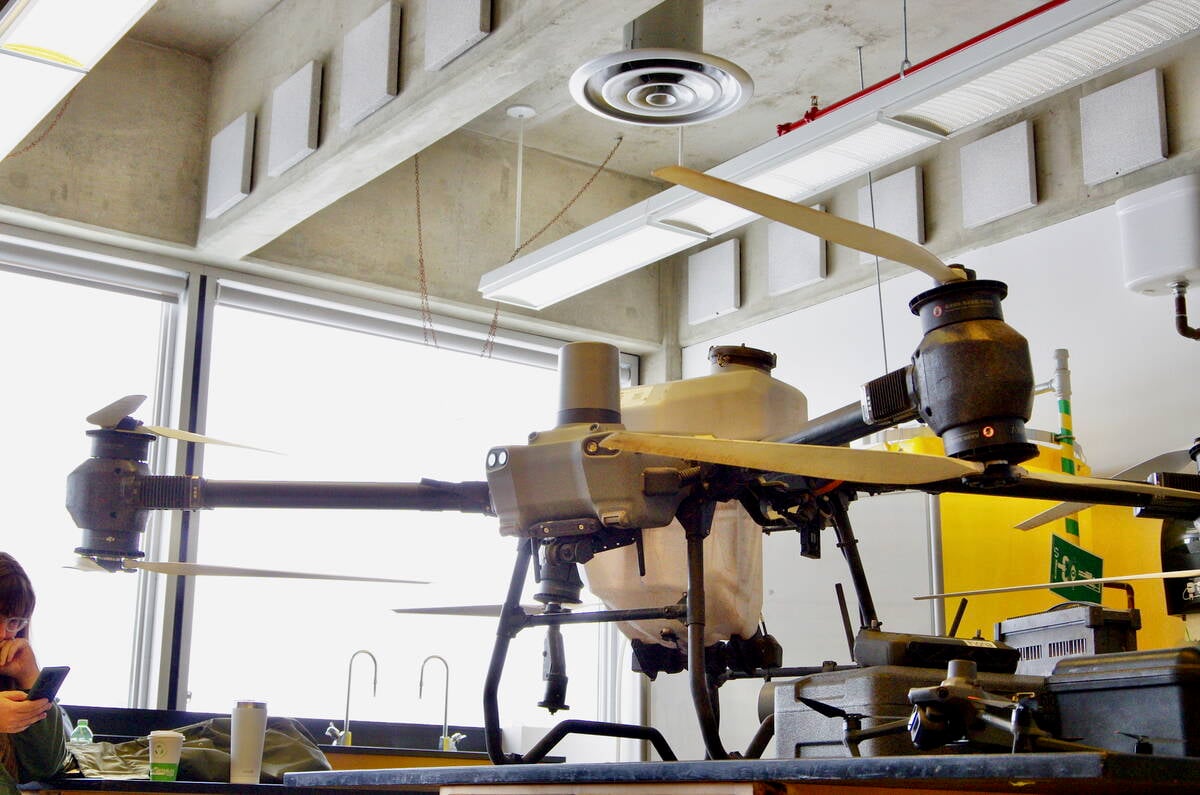
Manitoba trials work toward drone spraying approvals
Canada’s PMRA says pesticides need drone-specific labels before drone spraying can take off; Manitoba crop trials are adding data towards that approvals process.
According to the report, risk is none to very light in most of Saskatchewan, and a mix of none to light with pockets of moderate risk in Alberta.
In Saskatchewan, this represents an upward trend in risk, but in Alberta it’s a decrease. Grasshopper risk in Alberta has been declining since 2016, the report shows.
The report also shows counts of bertha army worm for 2019. Across Manitoba, most counts found zero to 300 of the species with a few pockets of 300 to 600 counts. This is a decrease from 2018.
The report appears slightly more optimistic than the 2020 grasshopper forecast the province released late last year, which gave a risk rating of very light to light for most of the province, with a large pocket of moderate risk in the northwestern corner of agro-Manitoba.
The only count in the “very severe” risk category was in the Municipality of Lorne in central Manitoba.
The provincial report said grasshopper populations have been increasing over the past couple of years, and grasshopper levels should be monitored in late May and early June, especially along roadsides and field edges.
Rainy weather in September and early October may have reduced the number of eggs the pests were able to lay, but conditions in August were good for egg laying, and the early snowfall is unlikely to have a significant effect on the insects’ overwintering.




